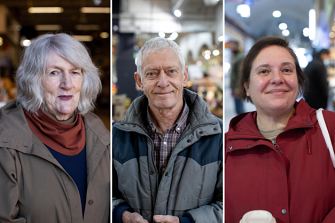Our family of four sampled the mid-grade Sportline, but does the brand and model still represent value and smarts?
FIRST IMPRESSIONS
Jules: I’ve a serious soft spot for Skoda’s Kodiaq.
Iain: why?
Jules: It’s hard to pinpoint the rules of attraction. It’s imposing but not too big, stylish without trying hard and lives up to its “Simply Clever” ad slogan.
Iain: Well, quite clever. It just about seats seven and offers reasonable performance. Skoda’s still a fringe brand, so you feel less sheep-like than you would in a Toyota or Kia.
Jules: Our Kodiaq’s the bad boy. Being the Sportline it’s black on black on black.
Iain: Like a middle management Mafioso not yet able to get a black Mercedes AMG for school drop off.
Jules: If you like.
Iain: Goodies include Matrix LED headlights, animated rear indicators, 20-inch alloys and black grille, roof rails, mirrors and badging.
Jules: What’s this all costing me?
Iain: A reasonable $57,990 drive-away, but Skoda value ain’t what it used to be. Option packs quickly add to the bill, too.
THE LIVING SPACE
Jules: It’s seriously luxurious inside.
Iain: Because of the aforementioned options. It’s $1900 to upgrade from Alcantara sports seats to leather with ventilation; the panoramic sunroof’s $1900 and a $3700 Luxury Pack brings heated front and rear seats, an electric passenger seat and advanced driver aids. Without the latter, safety kit is really wanting.
Jules: So what’s the final bill?
Iain: Wait. There’s more. Paint is $700 and a $2900 Tech Pack adds adaptive chassis control, Canton audio, hands-free tailgate and parking assist. Try $69,160 to drive away.
Jules: Is that Kodiaq RS money?
Iain: It’s $74,990 with those options included, plus you get an extra 48kW from its 180kW 2.0-liter engine.
Jules: That’s me sold. The Sportline’s still lovely though. Great to have a digital dashboard, wireless CarPlay and Android Auto, wireless charging and a 9.2-inch touchscreen.
Iain: It feels sporty. The steering wheel’s chunky, there’s faux carbon dash trim and racy red lighting in the driver display, doors and footwells.
Jules: There’s an umbrella in the door, as well as handy luggage nets and massive storage compartments.
Iain: Not so clever are central cup holders too small for my coffee cup or sports bottle. On the plus side, there’s good storage in the doors, which also house a small waste bin.
THE COMMUTE
Jules: I’m waiting for the Sport in Sportline.
Iain: Keep waiting. There’s only 132kW from the four-cylinder turbo petrol, and it’s got 1750kg to shift.
Jules: It’s an impressive cruiser. Quiet, comfy and the radar cruise control works with the banging sound system to keep me happy.
Iain: I found the seats overly firm, but driver aids are subtly non-invasive. Its dual-clutch gearbox is super slick when up to speed but jerky around town. It’s also sluggish off the line, which caught me out at junctions more than once.
Jules: No chance of a quick three-point-turn, something we mums need at school drop off. There’s a big delay getting between Drive and Reverse.
THE SHOPPING
Iain: They’re cost options, but the hands-free tailgate and birds-eye view camera are brilliant for the supermarket.
Jules: The normal reversing camera is surprisingly poor quality. The massive boot compensates and you can even fit a few shopping bags with all seven seats up.
SUNDAY RUN
Iain: It has impressive cornering skills. The optional adaptive drive mode adjusts things such as damping and steering in Sport mode.
Jules: I love those drive modes. Ambient lighting turns green in Eco, blue in Comfort and red in Sport. There’s even a snow mode and it all turns cool blue. That tickles me.
Iain: It’s good fun to throw into corners and the gearbox is at its best at speed. Steering wheel paddles are a welcome bonus. Grip from the Pirelli tires is good, but they’re quite skinny so you feel harsher bumps through them.
Jules: It is fun on back roads but ours is so closely priced to a Kodiaq RS I’d pay the extra for more power and theatre.
THE FAMILY
Iain: I worry our kids are being brought up in a heated leathery seat bubble.
Jules: They’re spoiled in the middle seats, which recline, slide back and forth and have mini foot rests. The sunblinds are handy, while the huge sunroof bathes the cabin with light.
Iain: Their own climate control is good, but do you know what’s simply not clever? Do not rear USB ports. For a family SUV? That just doesn’t make sense.
Jules: It’s also a bit of a mission accessing the two rear seats.
Yoain: They’re best for kids. I’m six foot and my head’s on the ceiling and knees are jammed in.
Jules: We averaged 8L/100km on the highway and 9.1L/100km overall. Not great as it needs 95 fuel, but at least a $1800 five-year service pack is decent value.
Iain: As for adventuring there’s scope for mild off-roading. It tows 2000kg but the downball weight’s a paltry 80kg.
THE VERDICT
Jules: The Kodiaq is striking to look at and beautiful inside, but those options make it feel expensive compared to Kia, Hyundai and Mazda rivals.
Iain: It’s superb to drive and behold but is missing some standard safety gear, there are no rear USB ports and it’s quite thirsty. It’s not the smart, value pick it once was.
SKODA KODIAQ SPORTLINE VITALS
PRICE From $57,990 drive away
WARRANTY AND SERVICE 5 years/unl’td km warranty, $1800 for 5 years
ENGINE 2.0-litre 4-cyl turbo-petrol, 132kW and 320Nm
SAFETY Nine airbags, auto emergency braking, radar cruise control
THIRST 8.2L/100km
SPARE space saver
BOOT 270-765 liters
.

















